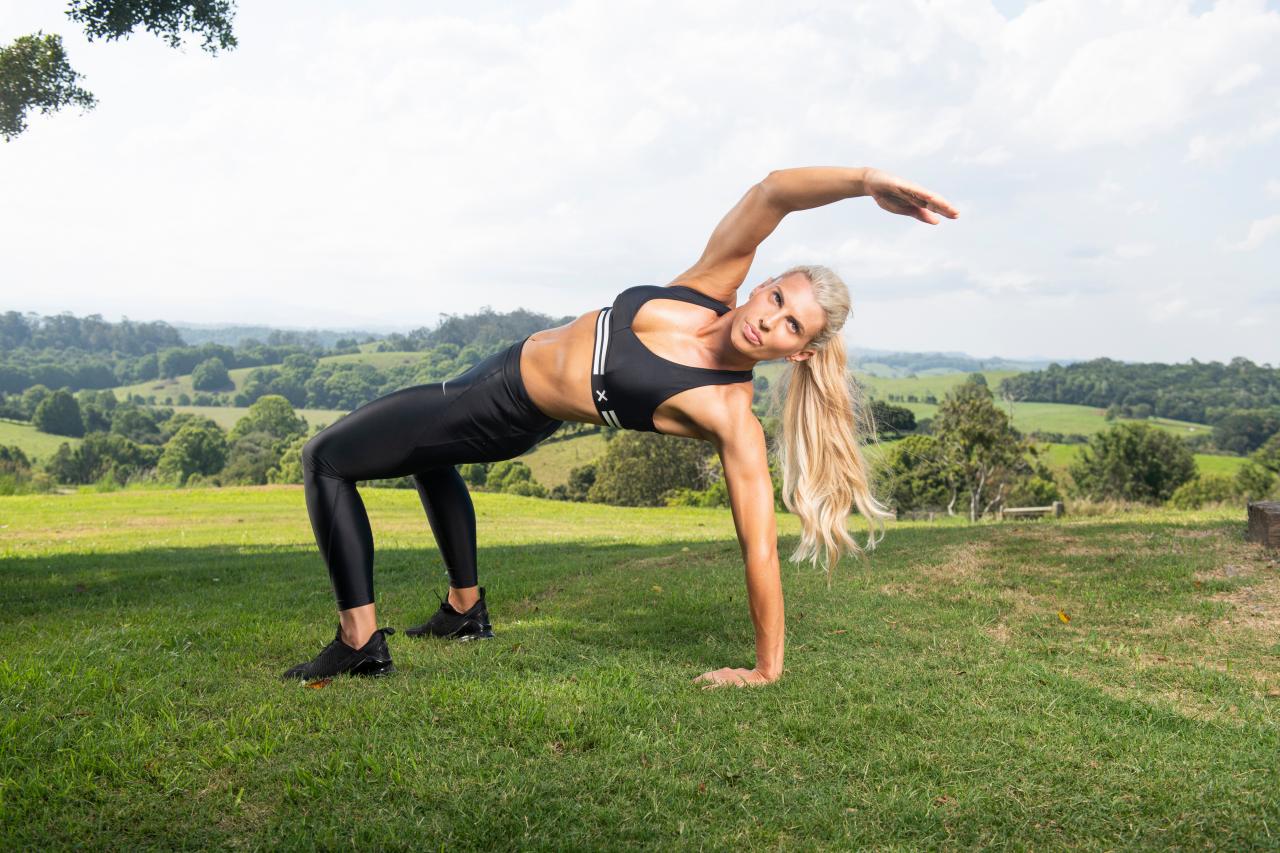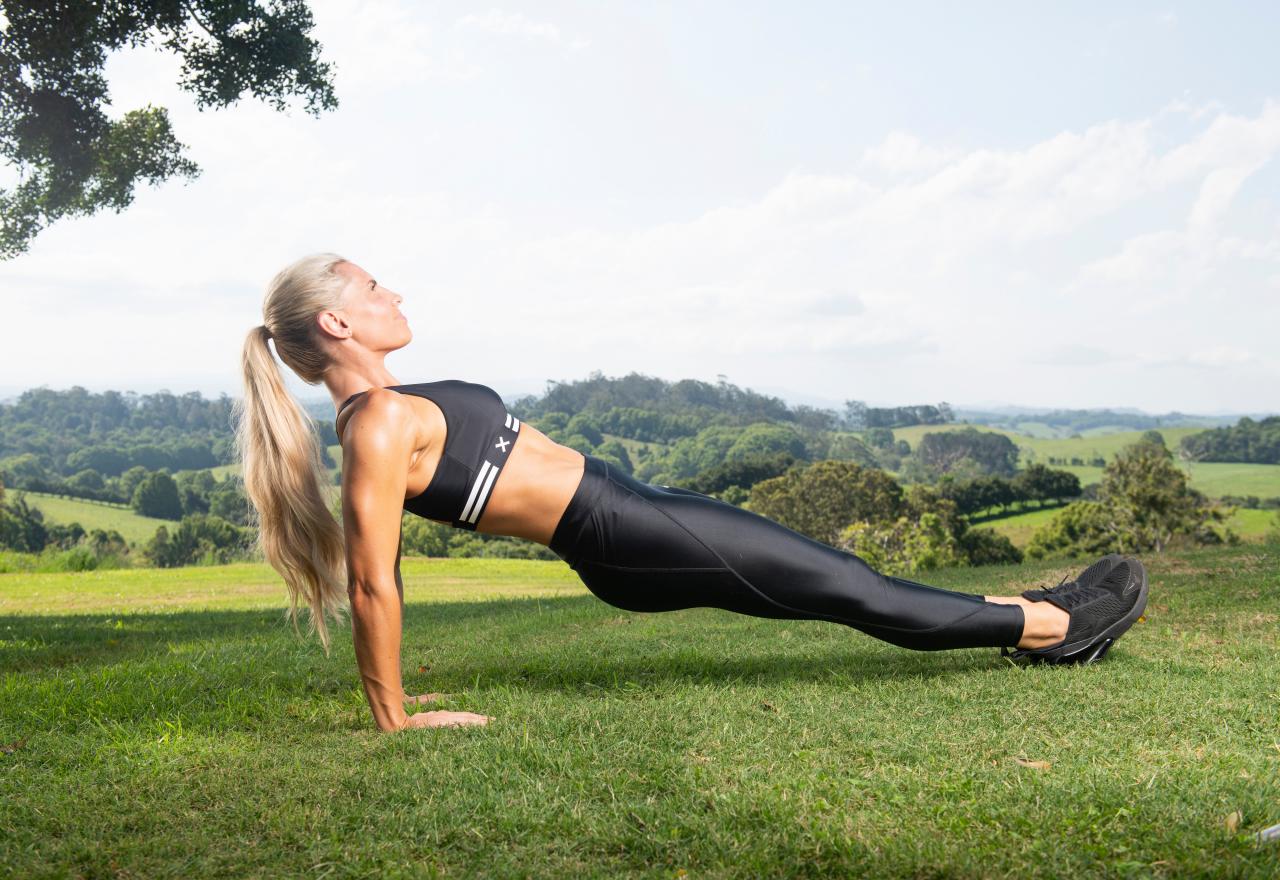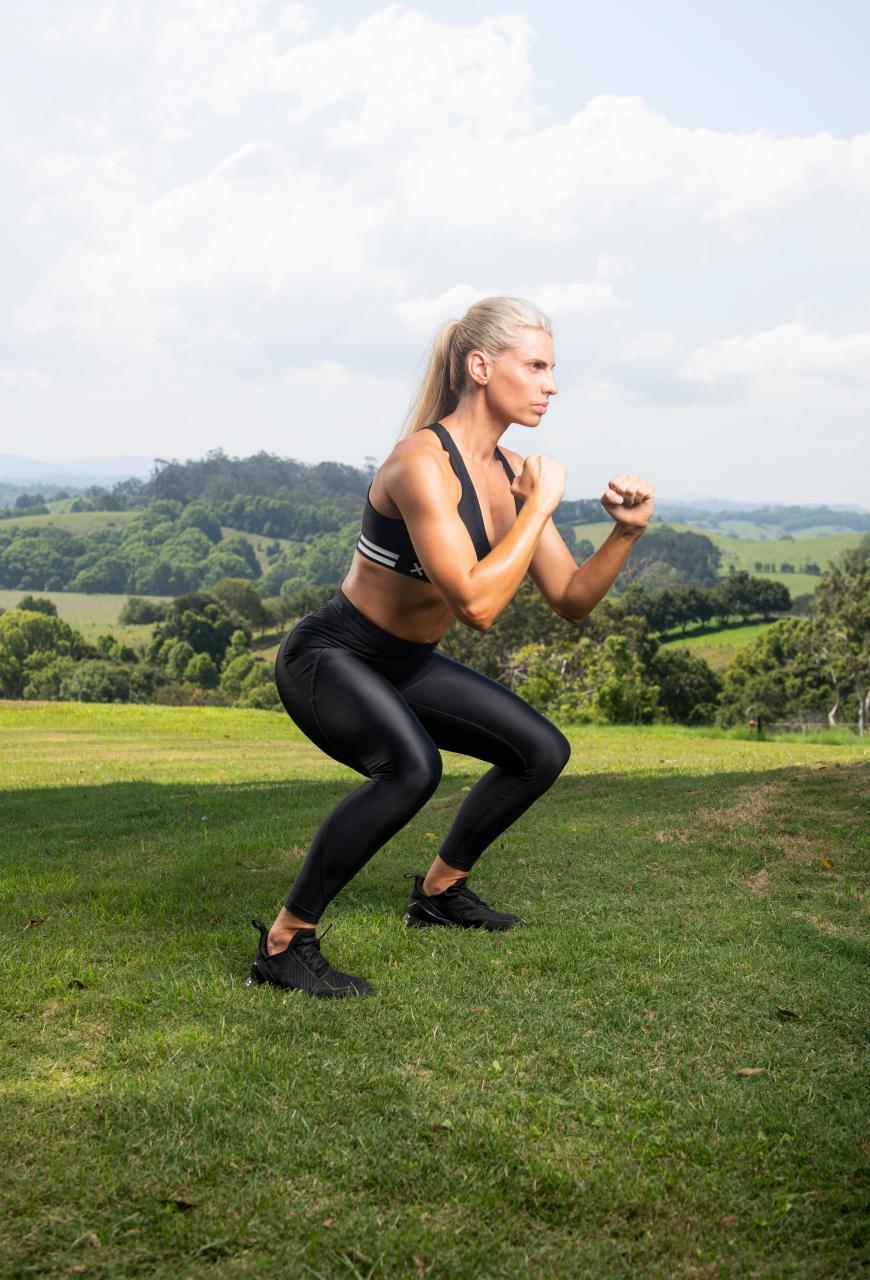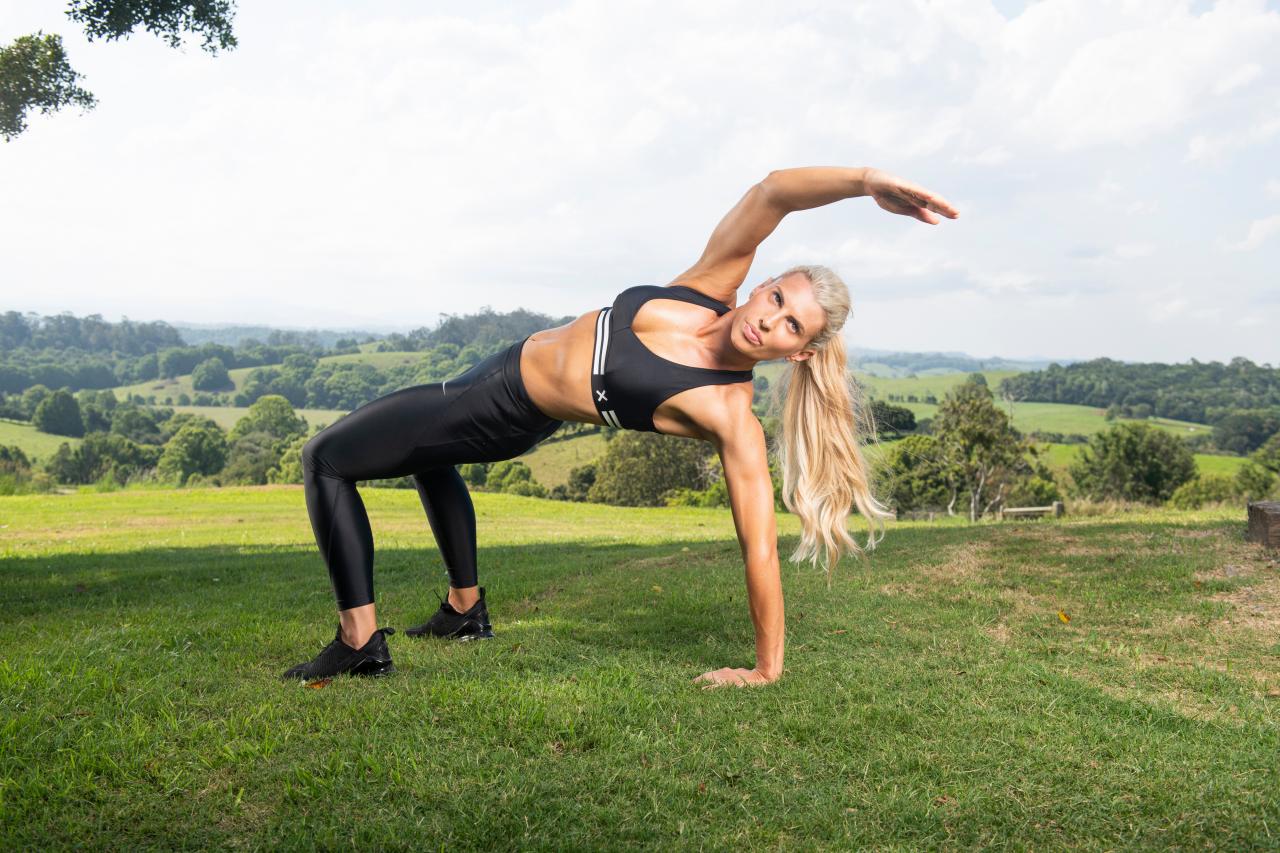
Pregnancy and having a baby changes the body in lots of ways. Some more obvious than others.
Sure there’s the belly, the bigger boobs, the swollen feet – but what about the changes that you can’t see?
Being pregnant actually puts a huge amount of strain on the pelvic floor – the muscles between your pubic bone and backbone that support your bladder, vagina, uterus and bowel.
During pregnancy and after giving birth, it’s really important to do everything you can to strengthen and support these muscles – if they get too weak it can lead to to stress incontinence. And nobody wants to leak every time they sneeze.
We asked Tiffany Hall, a resident trainer for Chris Hemsworth’s new health and fitness app, Centr, for the best exercises to strengthen pelvic floor muscles.

Tiffany is a mum herself and an expert in high intensity interval training and resistance training. Her whole ethos is that her workout is accessible for pregnant women and new mums to try anywhere.
‘Exercising your pelvic floor can be done anywhere, anytime, and doesn’t require any fancy gym equipment. However, before commencing any new exercise, have a quick chat with your GP – even just for peace of mind,’ says Tiffany.
‘They’ll guide you in terms of frequency and intensity, ensuring you don’t overdo it.’
The best pelvic floor exercises for pregnancy
Kegels
Remember Samantha from Sex and The City doing these exercises at a cocktail bar? Kegels are just a fancy name for contracting and relaxing your pelvic floor muscles.
The best way to perform kegels is to imagine you’re holding your bladder mid-pee – this engages your pelvic floor muscles.
Contract these muscles and hold for five seconds, then release for five seconds. Try repeating this 10 times, three times a day.
Walking hip raises

I love this exercise because the position really helps you to feel the feedback from your pelvic floor.
Begin by lying flat on the ground, hands by your side, and your knees bent at a 45-degree angle.
Now lift your right leg off the ground until your right thigh is vertical and your knee creates a 90-degree angle. Squeeze your glutes and make sure your core is activated by drawing your bellybutton into your spine.
Now lift up through your pelvic floor, connecting from back to front and connecting through the muscles between your hip bones. Lower your right leg and repeat on the other side.
Try three sets of 10 reps.
Squats

Squats are a double win – giving your pelvic floor and your glutes some TLC.
Stand tall with your feet hip-width apart. If this is uncomfortable, step your feet out wider and point them outwards at 45-degrees (this is the stance for a sumo squat, which may also help you feel more connection through the pelvic floor).
Now drive your hips backwards as your knees begin to bend. Remember to keep your back straight, chest up and stick your butt out as if you are sitting on a chair that isn’t there.
As you lower yourself, reach forward until your arms are parallel with the ground. Return to the starting position and repeat.
Try three sets of 10 reps.
What is the pelvic floor?
The pelvic floor consists of layers of muscles that stretch like a sling from the pubic bone (in front) to the end of the backbone, supporting your bladder, vagina, uterus and bowel. These muscles stretch when you’re pregnant and giving birth, which can cause bladder leakage or sometimes pelvic organ prolapse.
Don’t panic – like any muscle group, you can train your pelvic floor. In fact, strengthening these muscles can help support the baby in utero, assist during birth and reduce or avoid stress incontinence after pregnancy.
Think of it like training for an event: the more you practice, the stronger you’ll become, the less chance of injury and the quicker you’ll recover.
The pelvic floor also makes up an integral part of your core. So while training for the well-defined abs of your dreams, don’t forget to factor in your pelvic floor.
Tiffany Hall, expert trainer
Crab reaches

This is one of my faves as it works the lot: lower back, obliques, pelvic floor and glutes.
Start in a reverse tabletop position, with your hands facing away from your body and your butt a few centimetres off the ground.
Then lift your hips as you reach your right hand overhead and slightly to the left. Lower yourself back to the starting position and repeat on the other side.
Don’t forget to activate your core, squeeze your glutes and connect up through the pelvic floor.
Try three sets of 10 reps each side.
Bird dog
The name is funny, but this exercise is great for strengthening your pelvic floor and core, as well as improving balance and coordination.
Begin on all fours with your hands directly under your shoulders and your knees directly under your hips.
Now gently scoop your abs into your spine. Keeping your back and pelvis still, tailbone tucked under, reach your right arm forward and left leg back – reach through your left heel to engage the muscles in the back of the leg and your butt.
Return to the starting position and repeat on the other side, always keeping the core activated and pelvic floor connected.
Try three sets of 10 reps on each side.
Boss your bladder
Specific exercises aren’t the only thing you can do to keep your pelvic floor and bladder in order:
- Hold and squeeze your pelvic floor muscles before you sneeze, cough, jump or lift.
- Empty your bladder completely when you go to the toilet – and don’t go ‘just in case’. This can create fake sensations of urgency.
- Avoid returning to intense weight training straight away after giving birth. Also avoid lifting heavy loads.
- Don’t avoid drinking water – you need it as well as fibre-rich foods to help your digestive system.
As well as these handy tips, Tiffany says that it isn’t all down to you – don’t feel like you can’t opt for specialist help if you feel that you need it.
‘If you want extra guidance or help exercising your pelvic floor muscles, I’d suggest seeing a physiotherapist who specialises in women’s health,’ says Tiffany.
‘You may need a personalised program to help your pelvic floor muscles get back into shape.
‘And remember, all training takes time, so be patient and kind to your body – you’re a mum now and, in my eyes, a real-life superhero.’
We couldn’t agree with her more.
There is so much pressure on new mums and pregnant women to jump straight back into fitness – but when you’re caring for a new little life it is completely normal for your priorities to change.
So listen to your body and only start exercising when it feels right for you.
